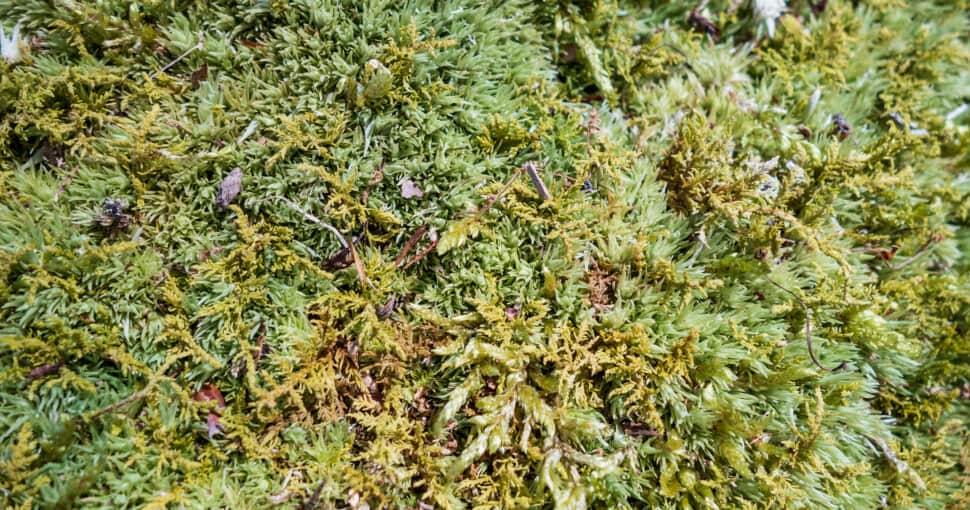Moss (Bryophyta) is a beautiful plant that grows naturally in forests and shaded areas of gardens. And while mosses are beautiful, they aren’t the easiest plants to care for. Because they require so much moisture and shade. Mosses grow in dense mats as groundcovers.
Contents
- 1. Creeping Juniper (Juniper horizontalis)
- 2. Japanese Spurge (Pachysandra terminalis)
- 3. Common Periwinkle (Vinca Minor)
- 4. Creeping Phlox (Phlox subulate)
- 5. Alpine Rock-Jasmine (Androsace alpina)
- 6. Miniature Rush (Eleocharis radicans)
- 7. Irish Moss (Sagina subulata)
- 8. Mossy Sandwort (Arenaria Wallowa Mountains)
- 9. Hairy Frogfruit (Phyla canescens)
Each plant has simple leaves and deep green foliage. But many other plants look like moss and grow in the same formation. Some of these plants are easier to care for and make a good substitution for moss in your garden. Some of these moss lookalikes are:
- Creeping juniper – grows in the same dense clumps as moss.
- Japanese spurge – a herbaceous perineal groundcover that reminds one of moss.
- Common periwinkle – a low-growing ground cover with purple flowers.
- Creeping phlox – a bright flowering groundcover that makes a good moss substitute.
- Alpine rock-jasmine – another bright flowering ground cover that is an excellent moss alternative.
- Miniature rush – a moss-like ground cover with long, single leaves.
- Irish moss – a dense-growing ground cover with small white flowers.
- Mossy sandwort – a densely packed ground cover that resembles moss.
- Hairy frogfruit is a low-growing ground cover that resembles moss with tiny white flowers.
If you want to plant some of these moss lookalikes in your garden, you should know how they resemble moss. We’ll discuss the similarities and differences between these 9 plants and moss.
1. Creeping Juniper (Juniper horizontalis)
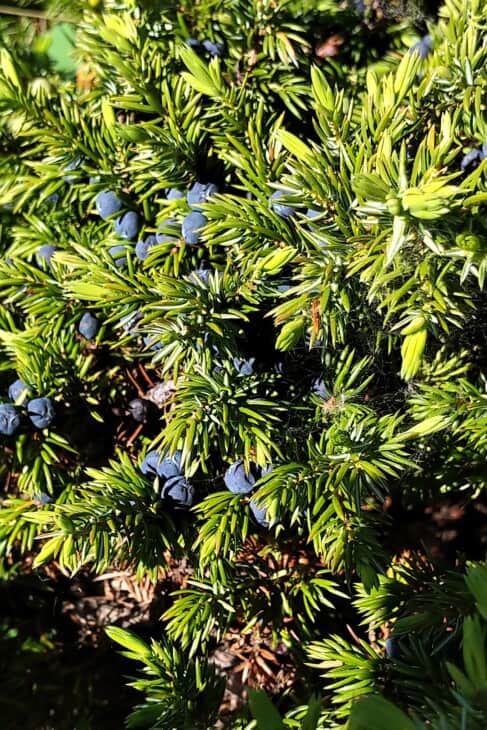
Creeping junipers are the first plants that resemble moss on this list. They are low-growing fern-like plants. Like moss, they also grow in dense clumps that make excellent groundcovers. Creeping junipers grow up to 1.5 feet high but can be trimmed to stay closer to the ground.
While mosses are shade-loving plants, creeping junipers prefer full sun. This makes them an excellent moss alternative for sunny spots. Creeping junipers have long, trailing branches and shorter branchlets. In addition, they produce brownish spring flowers, creating a beautiful contrast to the pale green foliage.
Although you won’t mistake a creeping juniper for moss, it is a good moss-like groundcover for sunny areas.
2. Japanese Spurge (Pachysandra terminalis)
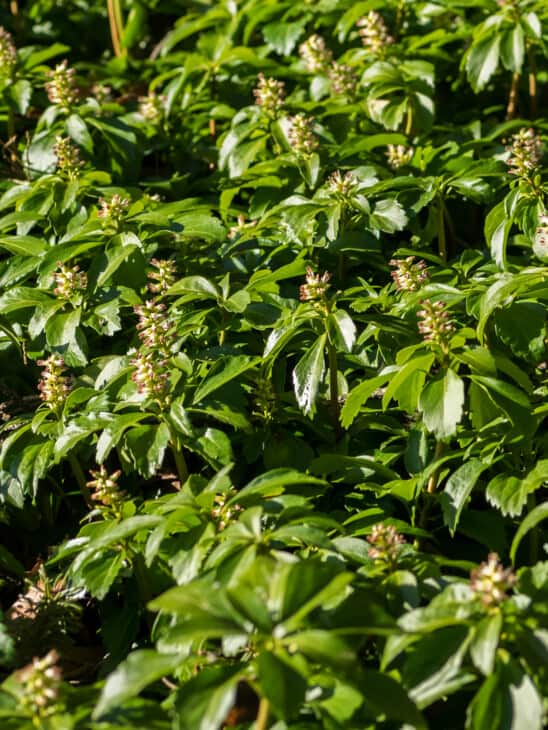
The Japanese spurge is another ground cover if your moss isn’t thriving. Japanese spurge is native to Japan and Korea. This ground cover grows densely and is evergreen, meaning your garden will look beautiful all year.
Japanese spurge grows to 12 inches tall, making it taller than the average moss variety. The delicate leaves grow in cone-shaped clusters and have serrated edges. They are almost the same color as many moss varieties, making them look more like moss from a distance.
Like moss, Japanese spurge prefers to grow in shaded areas and requires plenty of hydration. This is an excellent moss alternative if you want more height in your garden. Beware that Japanese spurge is a potentially invasive species, so keep your sprouts in check.
3. Common Periwinkle (Vinca Minor)
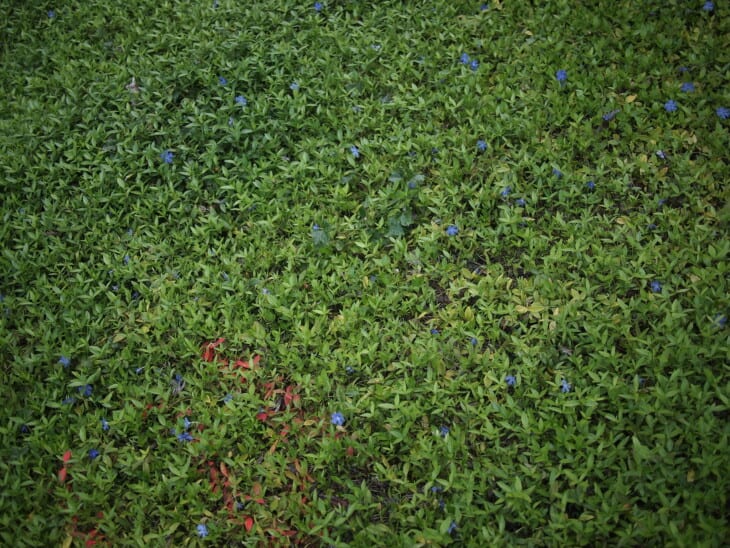
If you’re looking for a low-maintenance moss alternative, look no further than the common periwinkle. Despite its odd name, the common periwinkle is a beautiful ground cover plant. It is drought-resistant and easy to grow.
The common periwinkle has dark green leaves that are oval-shaped and have smooth edges. They grow in clusters of 3. In the spring and summer, the periwinkle plant produces bright purple flowers that adorn the ground cover. Each flower has 5 petals and a star-shaped center.
While common periwinkles don’t look precisely like mosses, they are a great alternative because they are hardier and easier to care for. The common periwinkle is closer to moss in size than any of the other plants, growing between 3 and 6 inches tall.
4. Creeping Phlox (Phlox subulate)
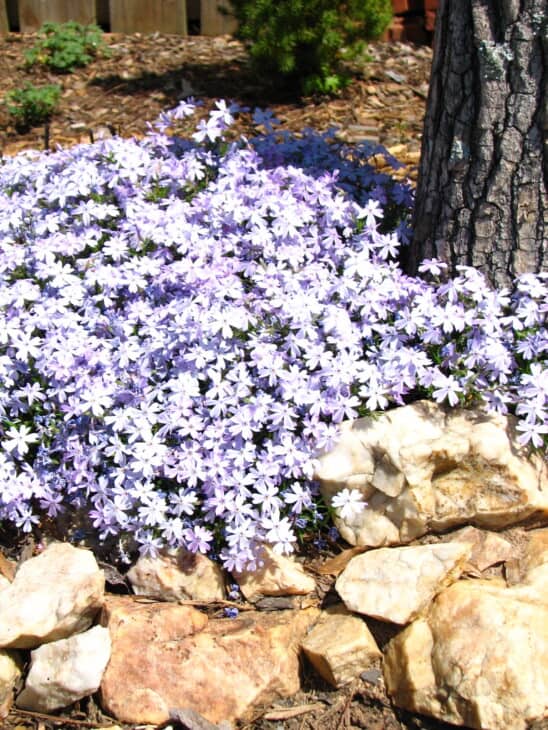
If you want a more colorful alternative to moss, don’t look further than the creeping phlox. Creeping phlox is native to North America. It grows up to 6 inches tall, about the same height as many moss varieties. The stems are covered in needle-like leaves, which makes the plant look like moss.
The creeping phlox is covered in beautiful, small flowers in the spring and summer. These flowers appear in many colors, including pink, white, purple, and multicolored varieties. Each flower has 5 petals that have a heart-shaped edge.
Unlike moss, creeping phlox is drought resistant and hearty. It is a good ground cover in sunny and shady areas. This is a great alternative to moss if you want a low-maintenance plant.
5. Alpine Rock-Jasmine (Androsace alpina)
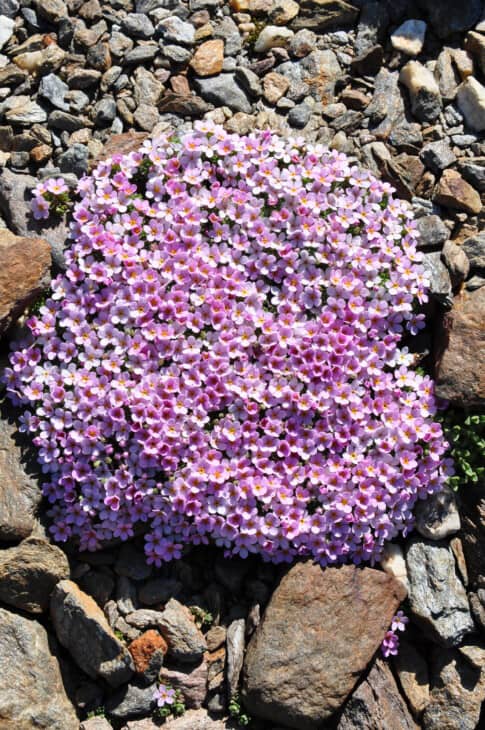
Another flowering alternative to moss is alpine rock-jasmine. This tiny groundcover is native to the Alps and often goes unnoticed in a busy garden. However, this is the perfect plant if you need a ground cover for a rocky section. It grows 1 to 4 inches tall, making it the same size as many mosses.
It also grows in small, densely packed clumps. This and the fine leaves make the alpine rock-jasmine look more like moss. The alpine rock-jasmine is covered in small, jasmine-like flowers in the spring, hence the name. The flowers appear in many colors and shapes and last a few weeks in spring.
When the alpine rock-jasmine isn’t in full bloom, it closely resembles moss. This makes it easy to mistake the plant for moss, which is why it is an excellent moss alternative.
6. Miniature Rush (Eleocharis radicans)
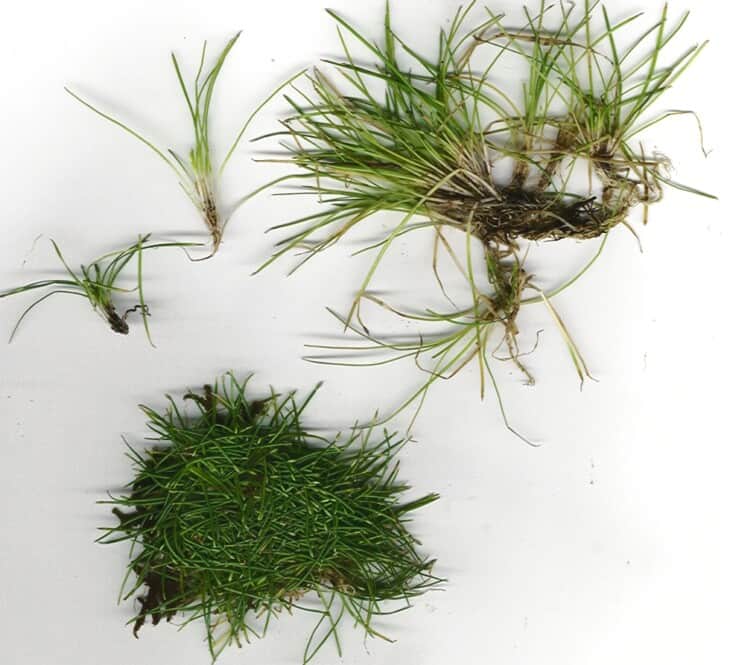
Miniature rush is another moss-like plant that one easily mistakes for a true moss. This little ground cover only grows about 2 inches tall. The plant has long, grass-like leaves that resemble some moss varieties. Some rush varieties also produce spores that look precisely like moss spores.
Because it is native to wetlands, the miniature rush requires plenty of water. It is a better alternative to moss in areas of your garden that easily get waterlogged. Like moss, miniature rush is a ground cover that grows in densely packed clumps.
Although you can spot the difference between moss and miniature rush up close, it resembles moss perfectly from a distance and is a good alternative.
7. Irish Moss (Sagina subulata)
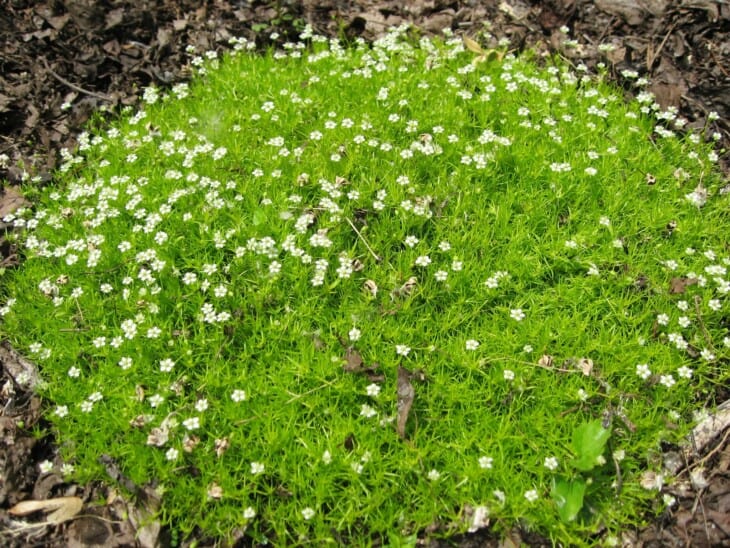
Irish moss or heath pearlwort resembles moss so closely that it has adopted the name. Despite it not being a true moss, Irish moss matches moss in size, color, and structure. This plant grows between 2 and 4 inches tall, which is the same size as most mosses.
It has tiny, dark green leaves that also look like moss. Like moss, it is a ground cover that grows in densely packed clumps. It is also a shade-loving plant like moss, which makes it an excellent alternative or companion plant for moss.
What makes Irish moss unique is its tiny white flowers in spring. They look like snowflakes against the dark green foliage. This is one reason you might consider Irish moss instead of other varieties in your garden.
8. Mossy Sandwort (Arenaria Wallowa Mountains)
Mossy sandwort is another plant that looks so much like a moss it even has its name. This sandwort variety is a groundcover plant that doesn’t produce flowers and has a structure like moss. It only grows about 1 inch tall and has vibrant, evergreen leaves.
It grows in densely packed clumps, just like moss. However, mossy sandwort is drought resistant, and you can plant it in areas that get more sun than is suitable for moss. Therefore, the mossy sandwort is an excellent alternative to moss.
Most people cannot distinguish between these plants unless they are experts and know what to look for.
9. Hairy Frogfruit (Phyla canescens)
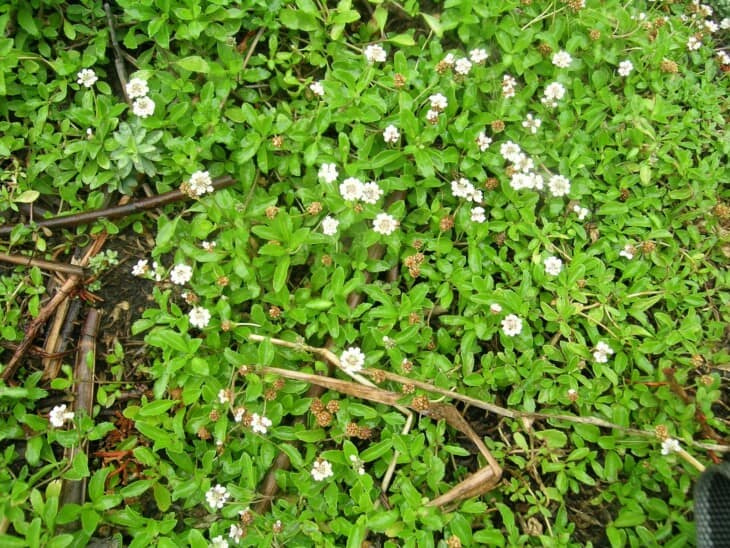
The hairy frogfruit is another interesting alternative to moss. Unlike moss, hairy frogfruit plants prefer full sun and don’t do well in cold climates where they lose all their leaves. Hairy frogfruit plants may be considered a weed, but their beautiful flowers make them acceptable.
Hairy frogfruit plants grow up to 24 inches tall but can be trimmed closer to the ground. They also grow in densely packed clumps, just like moss. However, these plants have showy, purple, and white flowers that attract pollinators to your garden.
These plants are an excellent alternative to moss in sunny areas. However, they are considered a potentially invasive species, so you must keep them contained.

